In February and March, physical distancing initiatives to slow the spread of COVID-19 resulted in reduced travel, which correlated with declines in air pollutant levels around the world. In April, however, we began to see an increase in air pollutants in parts of California, as measured by both regulatory monitors and Aclima’s mobile sensing network.
Analyzing regulatory data from the Air Quality and Meteorological Information System (AQMIS) database, we observed drops in air pollutant levels in every county in the state starting when the shelter-in-place order was issued through the first week in April. However, starting in mid-April, we began to see some increases in pollutant levels in certain locations. Changes in air pollutant and greenhouse gas levels can be caused by any number of factors, many of which overlap — such as precipitation, temperature, wind speed and direction, traffic patterns, and changes in human activity — so we are conducting ongoing research to more deeply understand contributing factors during the shelter-in-place order.
Customers, partners, researchers, and members of the communities we serve have asked us to share any insights we have into the impact of COVID-19 response on air pollution. A member of the San Diego County community, California Organizing Manager of Mothers Out Front Sandy Naranjo, shared her perspective on air quality in San Diego County, and how we might apply this new understanding going forward, in this video:
As part of this research, we observed that average pollutant levels throughout San Diego County have dropped during the pandemic response compared to prior years. However, there was an upward trend in pollutant levels starting the second week in April when compared to previous weeks in areas designated as environmental justice communities through the Community Air Protection Program (AB 617), as well as border areas. Our mobile sensing network has been measuring air pollutant and greenhouse gas levels in these areas on a block-by-block basis since the spring of 2019. While average air pollutant levels are still lower than the average of the past three years and are below pre-pandemic levels, this upward trend in parts of San Diego is important to explore further.
Exploring April Pollution Changes in San Diego
Increased emissions from changes in human activity, meteorology including wind, and topography are all potential factors contributing to this April uptick in air pollution in San Diego. To dig deeper, we looked at regulatory data from AQMIS measuring San Diego County-wide changes in weekday air pollutant levels from March 20-April 24 of this year, compared to weekday averages over the same date ranges for the years 2017, 2018, and 2019. Even though the order began the evening of March 19, 2020, the impacts of the statewide shelter-in-place effectively began on March 20. We look at year-over-year differences to help control for seasonal influences on air pollution levels. This year-over-year analysis focuses on weekdays to reflect changes that occur during the workweek, with the greatest impact on commuter and commercial-related traffic.
The above chart based on our year-over-year analysis shows that the average levels for ozone (O3), carbon monoxide (CO), fine particulate matter (PM2.5), and nitrogen dioxide (NO2) dropped during the shelter-in-place period from March 20-April 24, 2020 when compared with the same time periods for 2017–2019.
This decline in weekday pollutant levels during the shelter-in-place in comparison to prior years corresponds to the trend we’ve seen in the Bay Area and throughout the state. It should be noted that changes in CO and NO2 likely reflect changes in traffic and human activity, among other variables. However, changes in PM2.5 levels are more complex to interpret and more heavily influenced by meteorology including temperature, rain, wind, humidity, and weather systems driven by barometric pressure. This analysis focuses on San Diego County, and does not include other counties in the state. We will continue to study other locations and the variables affecting air quality in future analyses.
Air Pollution on the Rise in the Second Week of April in Parts of San Diego
Looking at our own hyperlocal data in the Portside communities and border area in San Diego, there were meaningful fluctuations in pollutant levels week-over-week. Since March 2019, Aclima has been measuring pollutants and greenhouse gases with its mobile sensing network in areas designated as environmental justice communities through AB 617, as well as along the U.S. border with Mexico. This work supports emissions reductions in parts of San Diego that are disproportionately impacted by air quality issues, including the neighborhoods near the port.
To get a clearer picture of air pollution changes in these areas, we calculated weekly average values of black carbon, carbon dioxide (CO2), and CO before and during shelter-in-place from measurements taken by our mobile sensing network. All three pollutants are associated with combustion processes from vehicles, industry, and biomass burning. Black carbon is an important type of particle pollution typically arising from diesel fuel combustion. Inhalation of these particles is associated with health problems including respiratory and cardiovascular disease, cancer, and birth defects.
Black Carbon Levels Decrease During Shelter-in-Place and Rain Events
By comparing weekly averages of black carbon levels in the five weeks before the statewide shelter-in-place order (Feb. 14 — March 19, 2020) with the first five weeks during shelter-in-place (March 20 — April 23, 2020), we observed approximately a 33% decrease in black carbon levels. Rain events in the area occurred on the week of April 5 when the weekly average of black carbon was at its lowest level. Rain is an important process in removal of particles from the air and thus likely contributed to reductions in observed black carbon levels.
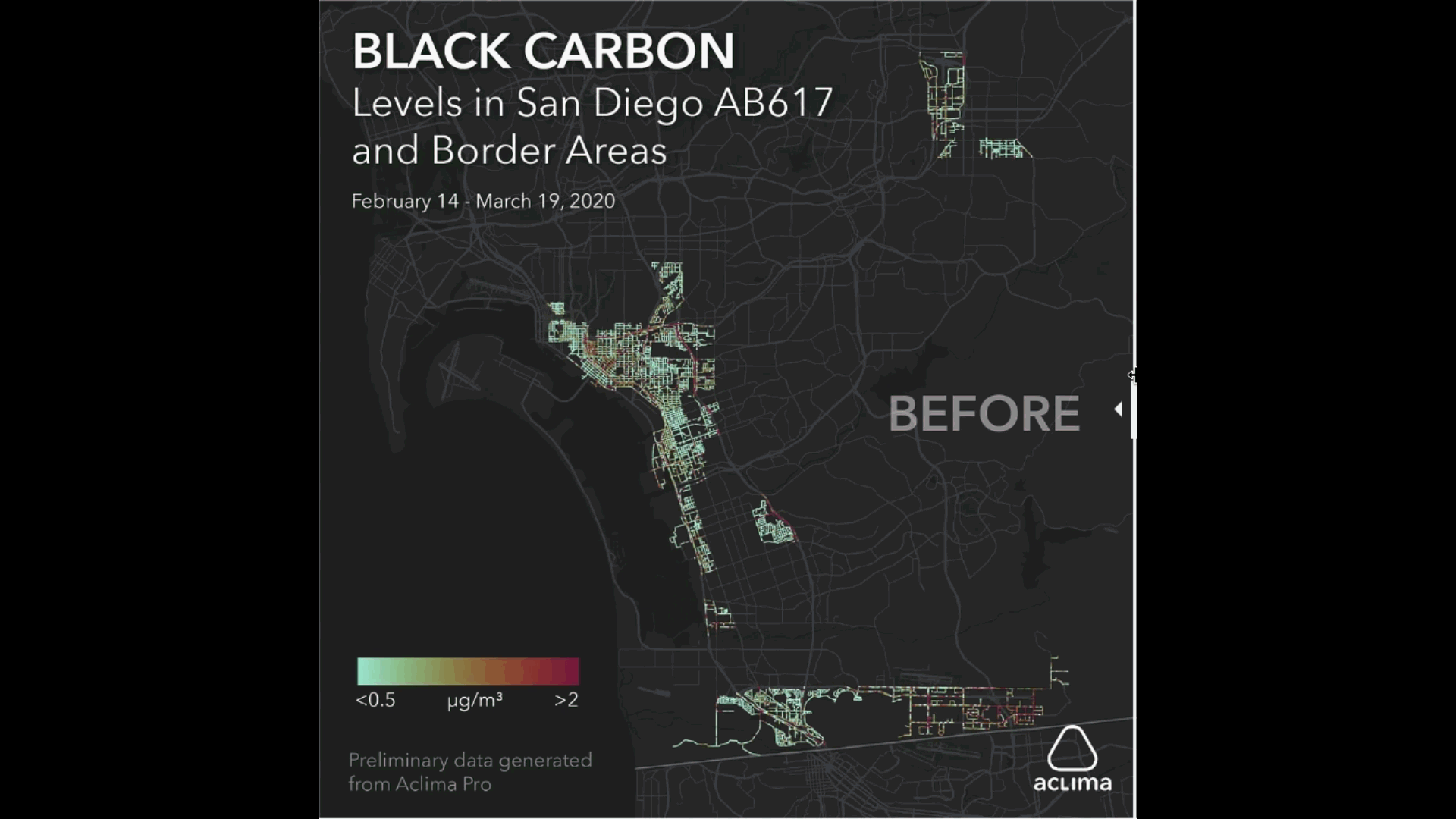 Slider of Black Carbon levels before and during shelter-in-place in San Diego Portside and border areas
Slider of Black Carbon levels before and during shelter-in-place in San Diego Portside and border areas
Note that each bar represents a full week including weekends used to calculate each average shown. Our hyperlocal mapping of air pollution measures concentrations at different times of day and days of week to compile high spatial resolution data over the course of months and years, whereas these maps represent only a few weeks of measurement. While they provide a window into air pollutant levels at a regional scale in the timeframe and locations they were measured, we are still collecting the measurements required to fully represent the local lived experience of air quality block-by-block.
The graphs above indicate that noticeable increases in black carbon levels have occurred more recently, starting on the week of April 12. Clues into possible sources of black carbon are found by understanding how concentrations change spatially on a map and by further analyzing patterns in related pollutants we are measuring.
Prior to the shelter-in-place order, major freeways and roads near the coast and the border show higher levels of black carbon, likely relating to port activity and cross-border trucking traffic. During shelter-in-place, black carbon concentrations decreased when compared to weeks before the shelter-in-place, but starting the week of April 12 concentrations started to increase. Ongoing research is required to isolate the impact of combustion emissions versus meteorological influences on observed air pollutant concentrations.
Carbon Dioxide and Carbon Monoxide Levels Both Decrease in San Diego
We also observed changes in CO2 from this hyperlocal data during the shelter-in-place, where we look at CO2 increases above Mauna Loa baseline levels (as discussed in our previous post) calculated for the past few weeks. From March 20 to April 23, CO2 levels above the Mauna Loa baseline decreased by approximately 50% compared to levels before the shelter-in-place began.
With our hyperlocal measurements, we can see that prior to the shelter-in-place order, elevated CO2 concentrations are observed throughout the AB 617 communities. During the shelter-in-place order, higher CO2 concentrations are observed primarily on major freeways, likely relating to combustion emissions from vehicles. Furthermore, CO2 concentrations decreased to levels close to the background CO2 concentrations observed in Mauna Loa, across several AB 617 areas, including Otay Mesa and the Portside communities. In addition to anthropogenic sources, biogenic processes such as plant growth cycles, urban tree canopies, and algal blooms also influence CO2 levels. For this reason, differentiating the causes of CO2 fluctuations requires further research.
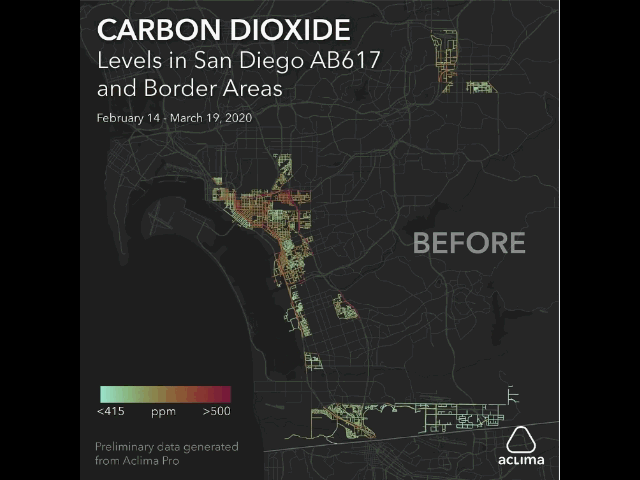
Another combustion-related pollutant, CO, decreased by approximately 20% overall when comparing weeks during the shelter-in-place order (March 20 — April 23, 2020) to before the shelter-in-place began (Feb. 14 — March 19, 2020).
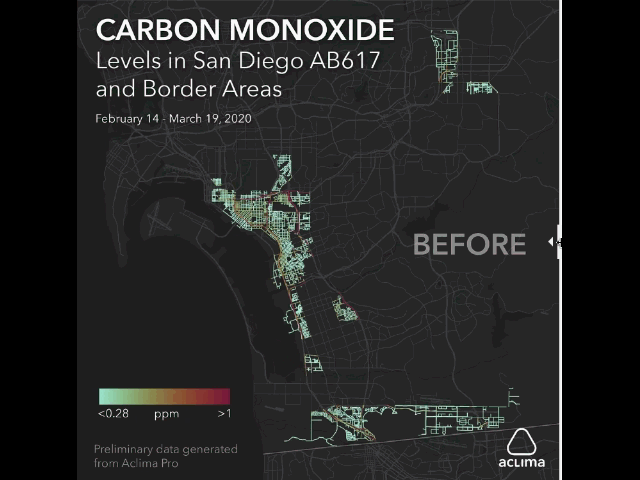
Relationships Between Weather, Public Health, and Air Pollution
Following the trend of a recent increase in air pollutant levels in the area, increased visits to parks and beaches in San Diego have been reported, in combination with a change in weather patterns, which may have led to an increase of pollutants. Specifically, wind data indicate calmer winds starting on the week of April 12, leading to more stagnant conditions, possibly resulting in the buildup of black carbon and related pollutants (CO and CO2) in the region. Wind plays a key role in distributing and diffusing air pollutants.
Clearly more research is needed to better understand the many variables contributing to these regional and hyperlocal patterns. Where temperatures rise and shelter-in-place restrictions loosen, we will likely see more increases in air pollutant levels as we are seeing in San Diego. At the same time, other factors not related to human activity could reduce certain air pollutant and greenhouse gas levels, such as meteorology and geography.
As we learn more about the increased rates of morbidity and mortality associated with long-term exposure to air pollutants, measurement data generated during this time may help us understand ways to reduce community vulnerability to COVID-19 and other health concerns. Communities are seeing the positive effects of decreased emissions due to shelter-in-place orders on air quality. Improved scientific understanding of these variables can inform actions to reduce future emissions even as physical distancing restrictions loosen. Lessons learned from this unprecedented event have the potential to shape future actions to protect human and planetary health for generations to come.
By Caroline Parworth, Sensor Technologist, Aclima
Share this
You May Also Like
These Related Stories
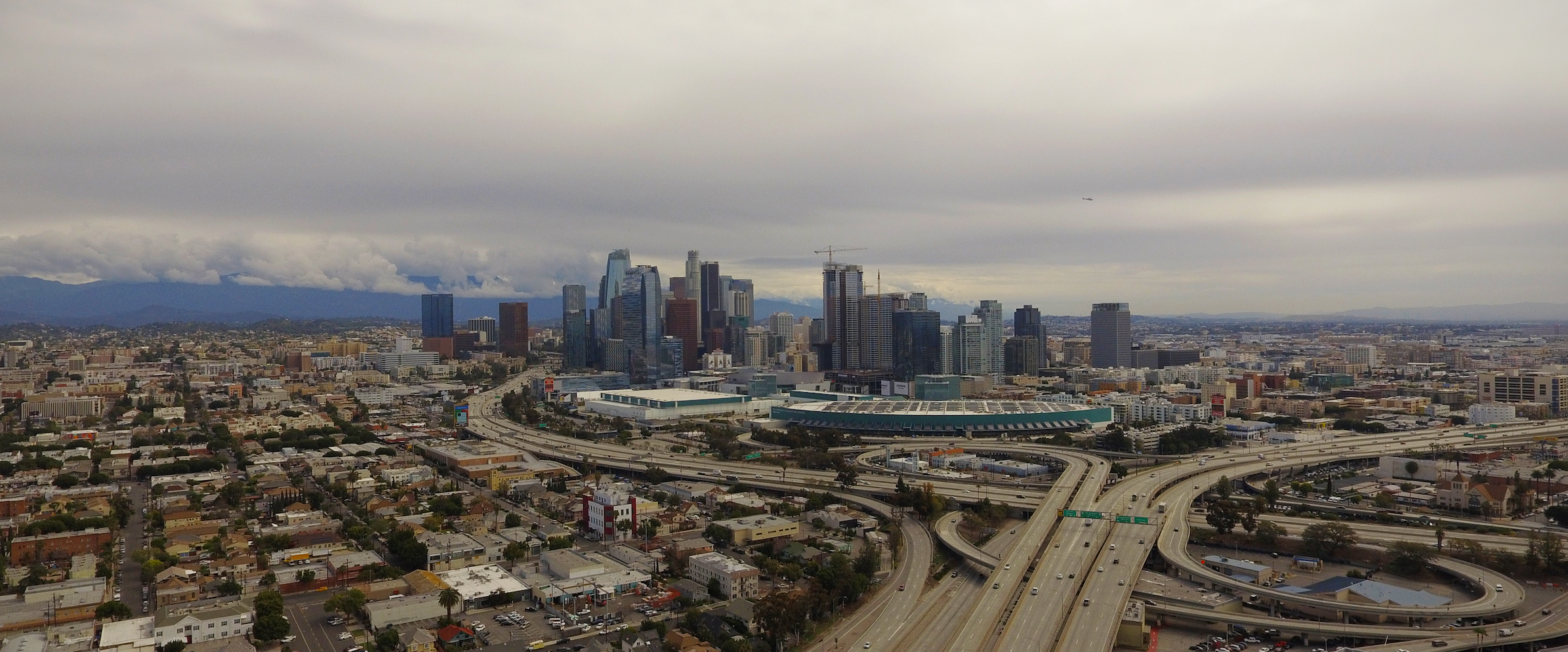
Cleaner Air Throughout California

Mapping Street-Level and Real-Time Air Quality in West Oakland
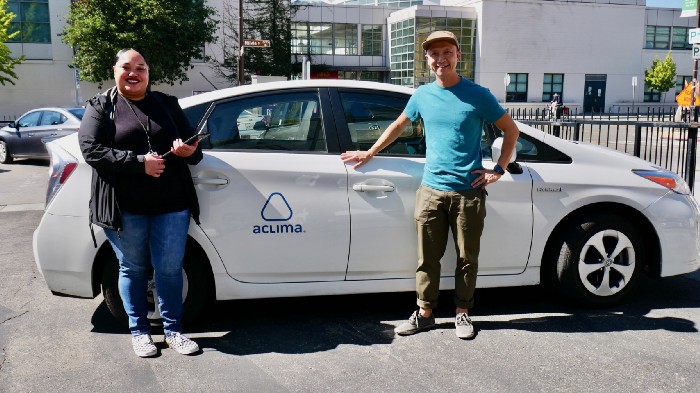
/2022_Aclima_Logo_Mist_500px_wR.png?width=501&height=193&name=2022_Aclima_Logo_Mist_500px_wR.png)
